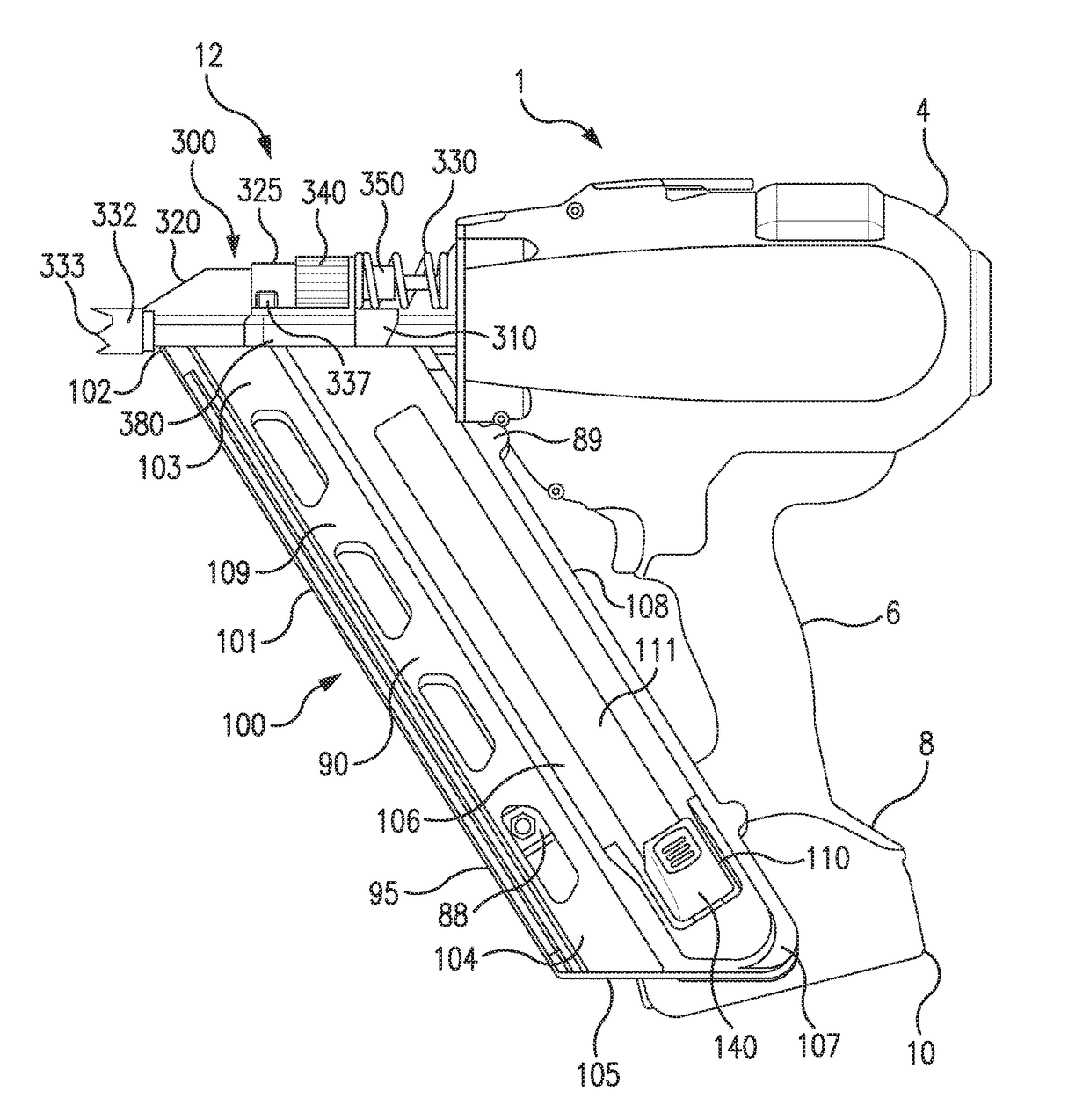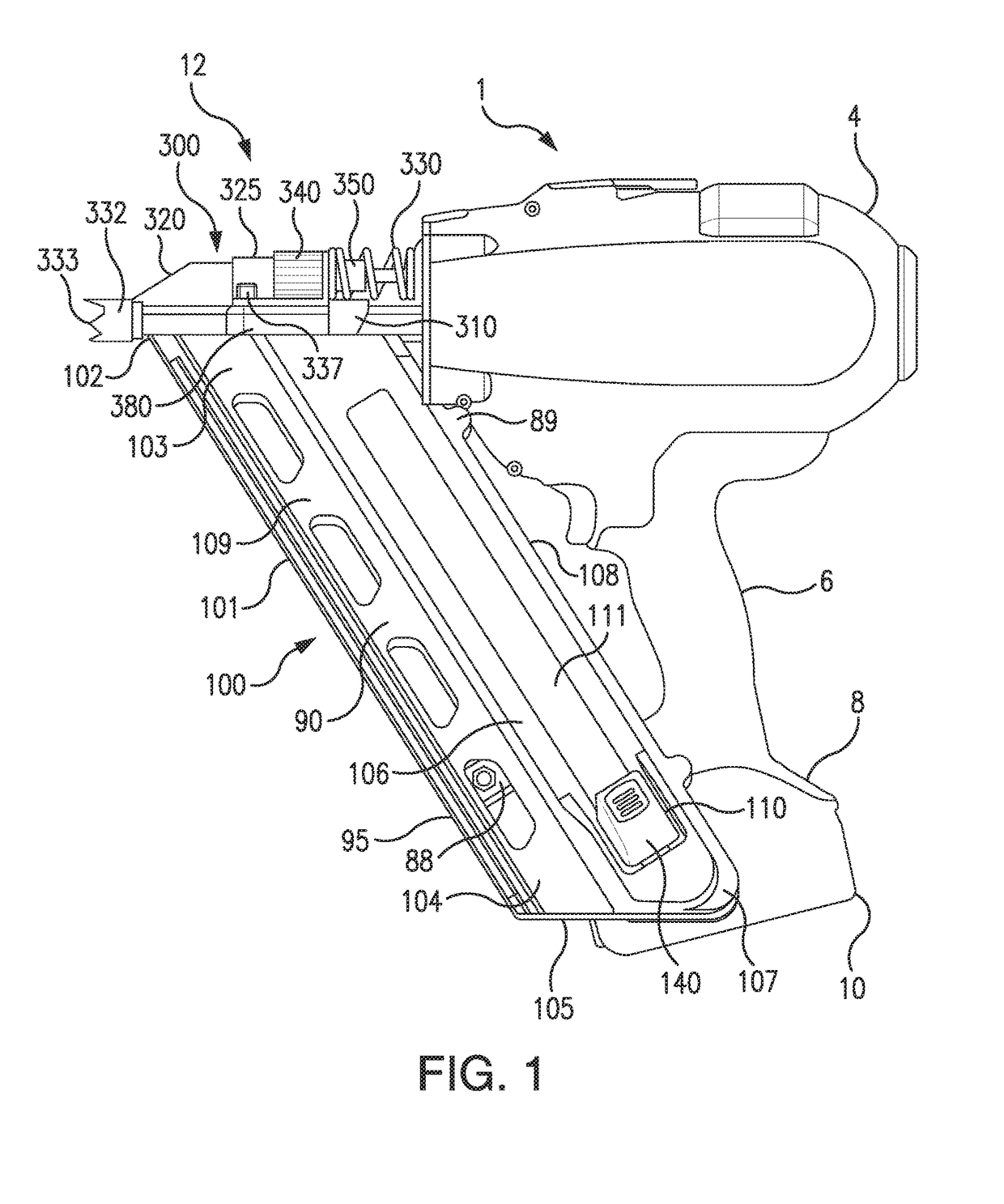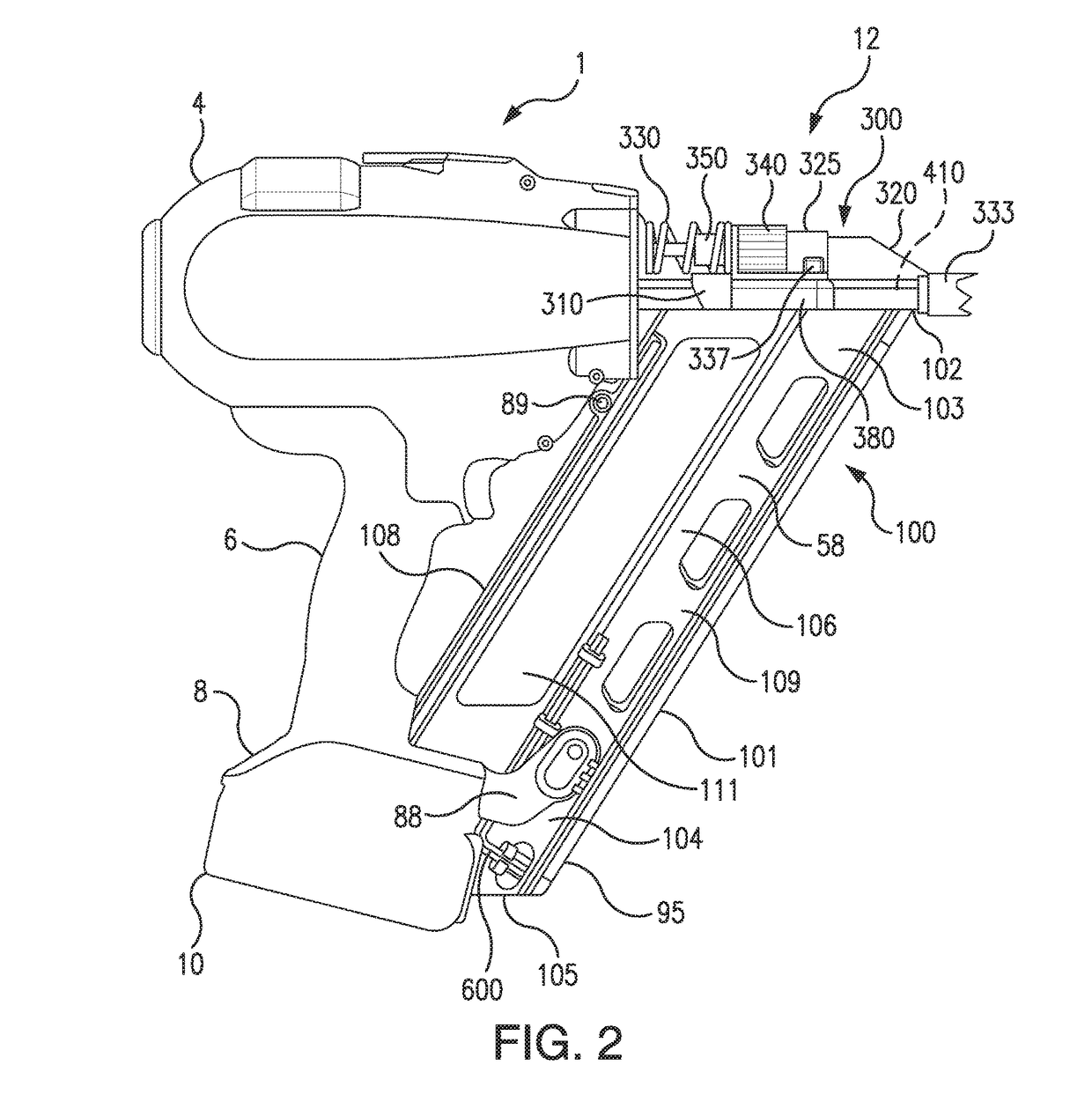High Inertia Driver System
a driver system and high inertia technology, applied in the field of can solve the problems of many available fastening tools not adequately guarding the moving parts of the nailer driving mechanism from damage, and provide the operator with the fastener driving mechanism, and achieve the effect of long operating life and high inertia driver system
- Summary
- Abstract
- Description
- Claims
- Application Information
AI Technical Summary
Benefits of technology
Problems solved by technology
Method used
Image
Examples
example 1
[0156]In an example a framing nailer having a flywheel inertia of 2.25 10̂−4 kg m{circumflex over (0)}2 and a flywheel speed of 13000 rpm experienced a 23 percent lower return spring life than a framing nailer using a high inertia driver system having a flywheel inertia of 2.77 10̂−4 kg m̂2 and a flywheel speed of 11000 rpm. The increase in flywheel inertia and reduction of flywheel speed in this example was found to not materially affect tool weight, readiness to fire, tool reliability, and nail penetration (power). This example found a reduction in flywheel speed and driver speed prolonged the useful life of elastic return elements connected to the driver, such as stranded wire return springs.
example 2
[0157]In an embodiment, the kinetic energy transferred to the return springs when using the high inertia driver system is reduced by 23 percent in a comparative test.
[0158]FIG. 20 is a perspective view of a third embodiment of a high inertia flywheel in the form of the cupped flywheel 702 shown as positioned for assembly onto a motor 5000. FIG. 20 illustrates the motor 5000 having a motor housing 510 and a first housing bearing 520 which bears a rotor shaft 550 driven by an inner rotor 540 (FIG. 23A). The motor can alternatively be a frameless motor which does not include a motor housing, or which can have only a partial motor housing which covers part of a longitudinal length of the motor. FIG. 20 also illustrates the cupped flywheel 702 as a cantilevered flywheel. For example the cupped flywheel 702 can have a mass of less than 14 g to 1418 g, or greater. In another example, the cupped flywheel 702 can have a mass of from less than 10 g to 1000 g, or greater. In an embodiment, the...
PUM
 Login to View More
Login to View More Abstract
Description
Claims
Application Information
 Login to View More
Login to View More - R&D
- Intellectual Property
- Life Sciences
- Materials
- Tech Scout
- Unparalleled Data Quality
- Higher Quality Content
- 60% Fewer Hallucinations
Browse by: Latest US Patents, China's latest patents, Technical Efficacy Thesaurus, Application Domain, Technology Topic, Popular Technical Reports.
© 2025 PatSnap. All rights reserved.Legal|Privacy policy|Modern Slavery Act Transparency Statement|Sitemap|About US| Contact US: help@patsnap.com



